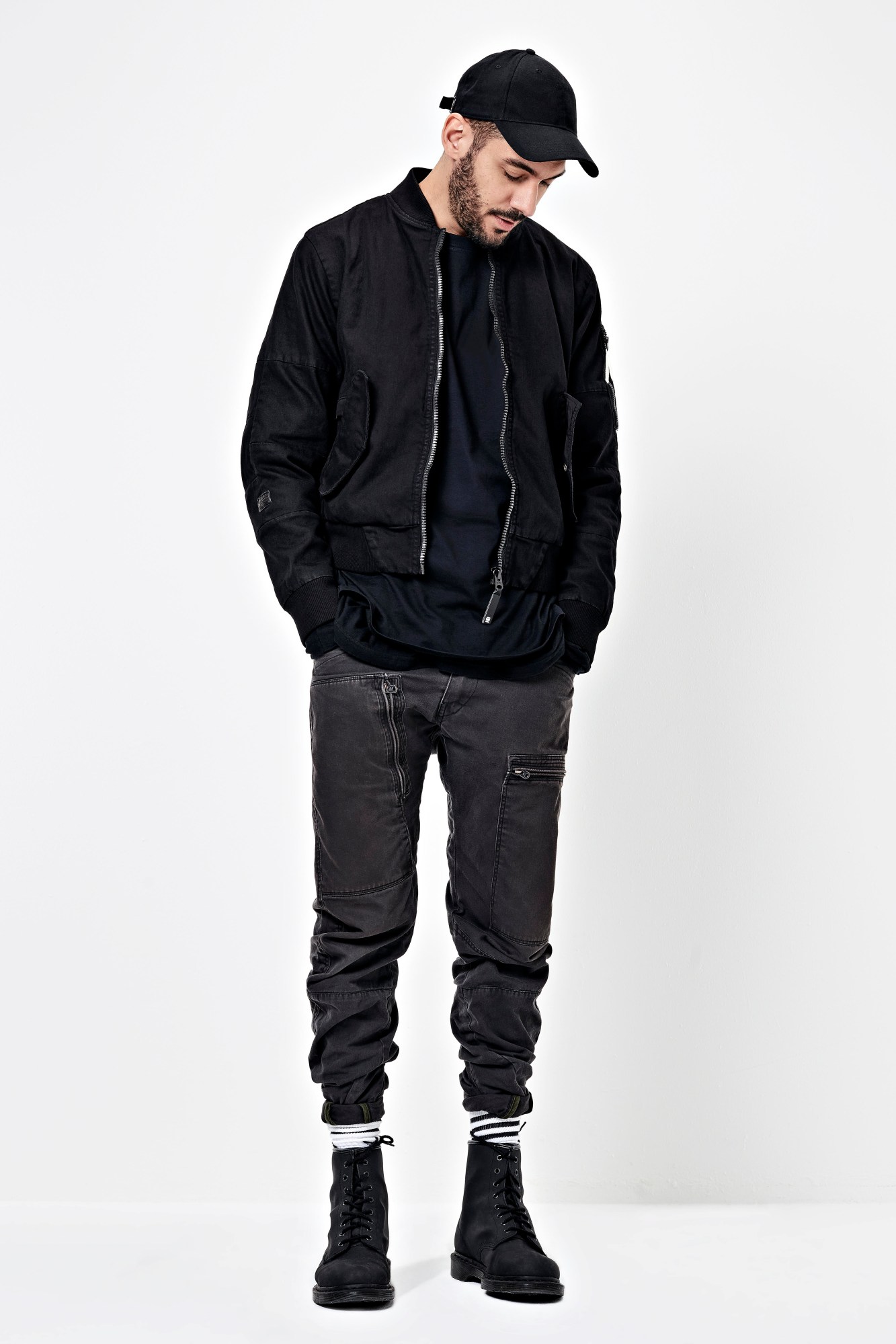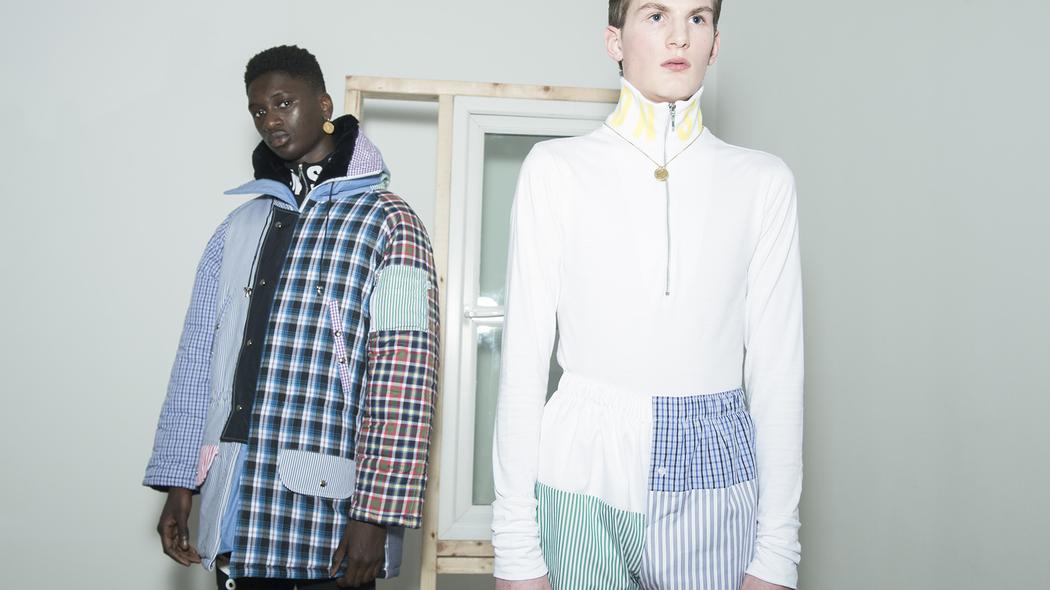Bursting the London bubble, Pringle of Scotland’s North Yorkshire-born Design Director Fran Stringer, Liverpool-born Christopher Shannon, Buenos Aires-born and Burnley-raised Aitor Throup, York-born-and-based Matty Bovan, Stoke-born Matthew Miller, Syrian-born and Sheffield-raised Nabil El-Nayal and Chester-born Daniel Fletcher reflect on how the North shaped them and to the extent to which design inspiration can be found beyond the M25. From Throup encountering the C.P. Company-clad, Casual-lined Turf Moor terraces to Matty Bovan discovering the colourful cloth-filled Bombay stores of Bradford and Fran Stringer finding herself surrounded by argyle sweater styled subcultures in North Yorkshire to the three stripe versus swoosh battles on the streets of Stoke, these designers discuss the influence of the north on their design past, present and future.
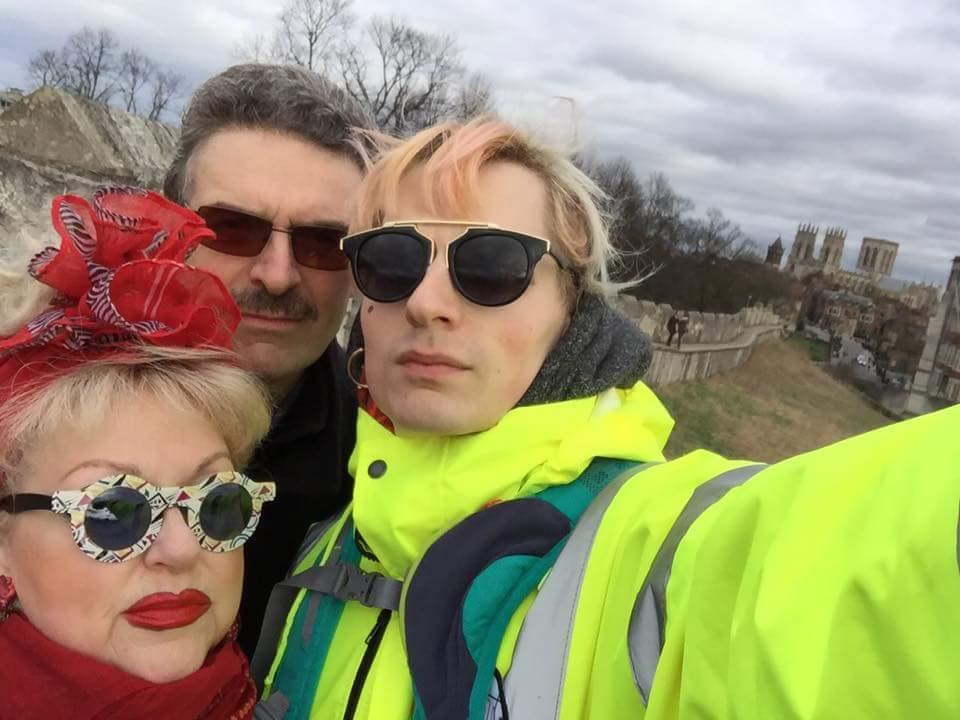
Firstly, describe your hometown, and tell us your earliest memories of style growing up?
Fran Stringer: I grew up in a tiny sleepy northern fishing village called Saltburn-by-the-Sea. While I was growing up it was a defining moment for style and fashion in the north — there was lots of focus on self-expression, taking a stand or making a point through fashion.
Christopher Shannon: I was born in Liverpool and raised in South Liverpool, Beatles territory. It’s very 20s deco suburban, lots of cherry blossom and avenues. Not really people’s idea of what Liverpool is like, it’s called Mossley Hill and sits between affluent Calderstones, which is full of doctors and footballers, and Garston, which is much more industrial. When I was growing up it was quite derelict, lots of docks and gas works. The footage we used for the North: Fashioning Identity exhibition and The Comfort And The Horror at the Alison Jacques gallery covers this area in the late 80s.
Matty Bovan: I was born and raised in York. I remember going to Bombay stores in Bradford where my dad is from and buying loads of scrap bags of fabric — loads of holographic dance fabric and Indian fabrics that I was obsessed with.
Aitor Throup: Burnley, Lancashire — some might say it’s cold, grey, wet and grim, and I would agree, but I would also say that it’s real, raw and full of a different kind of authentic beauty. It’s full of passion, hope and love. People are either stuck in the prescribed cycle, or investing in some wonderful potential to break out of it. My earliest style memories are of being on Turf Moor as a kid soon after moving to Burnley from Madrid, surrounded by all these men wearing incredible jackets… like a sort of uniform, but no two pieces were the same. There were almost fantastical sights: reflective and multi-colour jackets, goggles built into hoods, checkered scarves hiding people’s identities… it just left a huge impression on me. I could just sense that there was something important or meaningful about these garments. Eventually I learned that the brands I had been fascinated by were Stone Island and C.P. Company. So my earliest memories are definitely attributed to the great Massimo Osti.
Matthew Miller: Stoke-on-Trent is an old industrial behemoth with charismatic and charming inhabitants. It sadly bulldozed all of its industrial heritage in the 90s and naughties. Mismanagement of what should have been protected buildings. It’s surrounded by countryside and a walk in any direction leads you to green rolling lands filled with never ending forests. Growing up, early style came from hand me downs and jumble sales to be honest. It was when I hit my teens that I discovered my own sense of identity and began to create this through clothing. Tracksuits were a staple with equal love for both Nike and Adidas.
Nabil El-Nayal: I used to come back to England regularly — every summer more or less. A lot of the clothes I was familiar with were charity shop clothes. Boybands in the mid-90s were a big influence on me too. Everything was big and boxy. I remember buying a silver bomber jacket at 14 and not caring a cow about the fact that it was an adult XL jacket. Many of my garments were bought from markets or from car boot sales. We didn’t have much money but that didn’t matter one fucking bit.
Daniel Fletcher: I’m from Chester, which is on the border with North Wales, not far from Manchester and Liverpool. It’s much more rural but it was a good place to grow up because it meant I got the best of both worlds; you can see that mix of country and city in the style of Chester. There’s a lot of people walking around in a gilet and hunter boots and another load with their rollers in during the day wearing a tracksuit. It’s a bit glam, not quite Real Housewives of Cheshire, but on the higher end of the spectrum than Hollyoaks. The city itself is quite beautiful, a lot of black and white buildings and a sandstone Roman wall surrounding the whole city.

What role would you say your hometown played in your own creative realisation?
Fran Stringer: It was less about direct influence and more about escapism. As a child it was daydreaming that led to me becoming creative. There is an understanding that a certain level of boredom encourages imagination and creativity. You have to ‘think’ your way to somewhere new. I entertained myself through art and design and was a prolific painter.
Christopher Shannon: It laid the foundations. In a way it’s the perfect sized city, there’s enough happening to feel like you can involve yourself, but also a limitation that makes you curious to leave. It’s a city of such diverse history — it feels very culture heavy. There was enough interesting people around to learn things from, to introduce you to things. I didn’t really know my sense of style and my references were so particular to Liverpool until I was studying at CSM. Art school seemed like the only way out, I didn’t think there was another way to leave home, I wasn’t going to move to London and get a job in the city.
Aitor Throup: If I hadn’t moved to Burnley I would never have become a designer. I still have a house there, where I spend time with my daughter… I still have all my best mates from growing up… Burnley keeps me grounded. I was growing increasingly depressed and suffocated by my work, I was actually on the train to Burnley when I finally dealt with all my unhappiness and started writing non-stop, until I had this sort of moment of clarity. It’s like, having a kid obviously gives you a huge sense of perspective in terms of what is and isn’t important, and allows you to deal with things in a much more direct way; but growing up in Burnley… well, that gives you a whole other perspective. It’s not easy for something to get on top of me. There’s always a solution.
Matty Bovan: I was lucky my mum was always doing creative things in the house so that always inspired me as a kid and I was always making stuff from a young age. There used to be a great craft shop in York I would go to and save up money, which has sadly now gone, but I used to be so obsessed by craft products.
Matthew Miller: It’s a weird one really, I was never really the same as all of my peers. I didn’t really accept that I had to be or dress like everyone else. The lads from my estate found this hilarious and would joke about what I was wearing at football. I suppose my home town challenged me to explore the realms of what else is there in the world.
Nabil El-Nayal: I think what is crucial here is the fact that those years were spent growing up here in Sheffield. I went from not having much exposure to pop culture in Syria to being completely immersed in it. It was like Christmas every fucking day. I experienced and consumed fashion in a very different way — people here got dressed up for every occasion — school was my daily catwalk show. There was always a “what the fuck is he wearing” feeling, which only encouraged me more.
Daniel Fletcher: I think it stifled it a little at first, coming from a small city in the north of England there wasn’t an obvious path to becoming a fashion designer, I didn’t know anyone who had done it and I think I was a little embarrassed about my ambitions at first. It wasn’t until I was 19 and had left home to study Art Foundation at Kingston that I really committed to fashion.
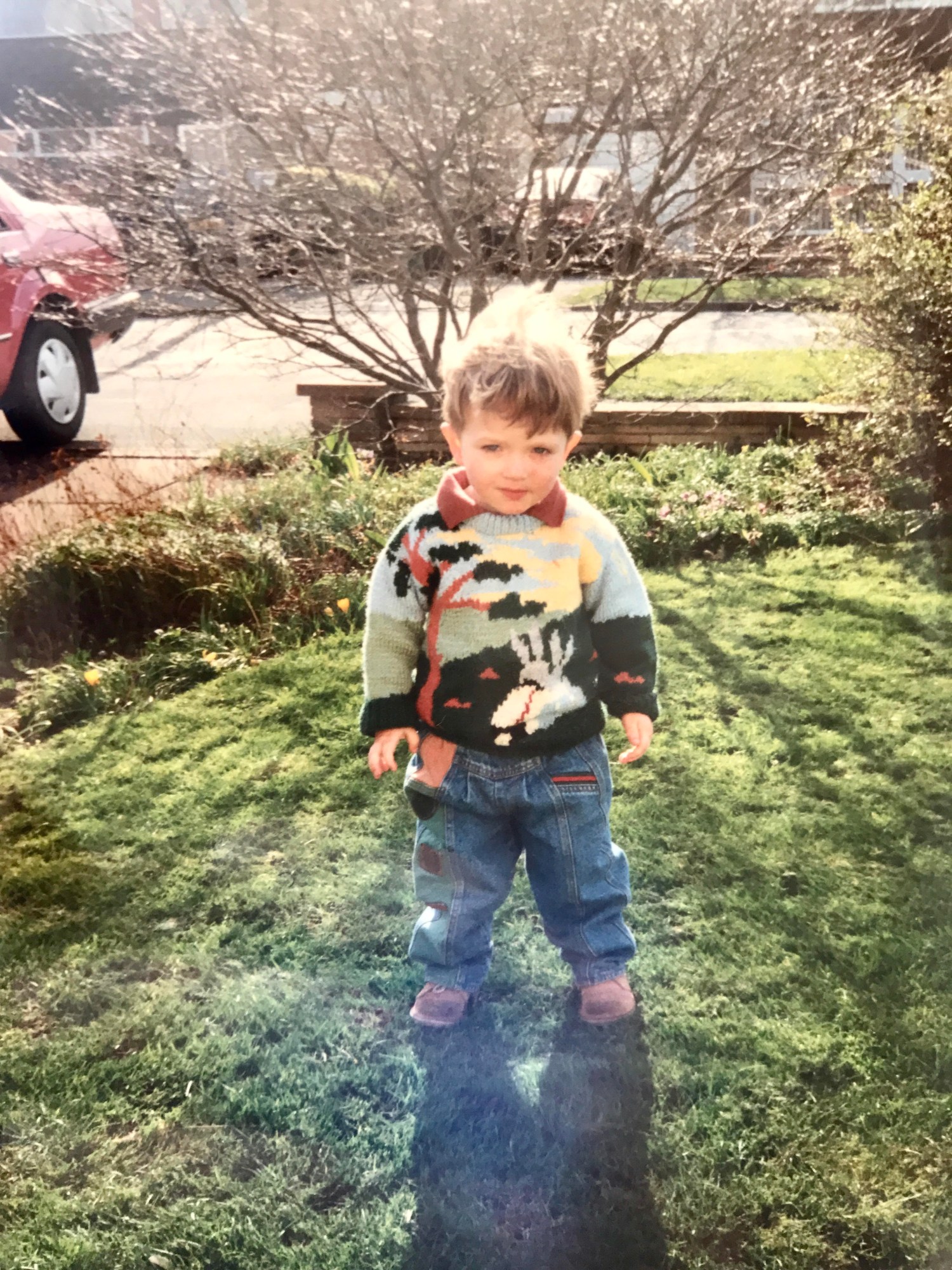
What role would you say the north has played in your own creative output?
Fran Stringer: As with many of my contemporaries in fashion, the north has played a part in my creative evolution and output, for the very fact that it was so culturally relevant to society during my teenage years. Fashion was closely tied to social disruption and taking a side. It was tribal. You could look at what someone was wearing an instantly know they were a Hacienda raver, a new romantic, a ‘towny’ with their logos. Interestly for me, one of the brands that had a huge following in the north during the 80s was Pringle of Scotland. The distinctive and iconic argyle became a uniform in itself. My brother used to wear stone washed jeans and a cream roll neck under his pink Pringle argyle!
Christopher Shannon: I think anywhere you grow up affects you. I guess Liverpool has a very contrasting nature, there’s a roughness to it, but also a sort of faded grandeur, and there’s always been a divide in my work between high and ‘low’ culture or however you like to define it. Sort of playing out in your sportswear but in a massive derelict shipping merchants house on the river — that’s more poetic than I meant, but something about those elements resurfaces in my work. Then sometimes I don’t think about it at all. The season we are working on at the minute is to do with silhouette and more of a momentary visual.
Aitor Throup: A huge role. I would honestly say that it’s still somehow the source of all my creative clarity and output. It’s where my energy becomes balanced and I can think clearly… I attribute it to the rain, and the views. I have been wanting to do a documentary about Burnley for years. I can’t describe it. It’s just real. That’s the closest word I can find.
Matty Bovan: Well my studio is based up north so I get the best of both — I get to go out and about in North Yorkshire and I get to be in London a lot for work. I love the open spaces up north, like the moors and all the towns. It’s very different from London.
Matthew Miller: I used to think it didn’t, but on a greater reflection It does for sure! It has informed me about lad culture and sportswear, which I reference heavily, although in a very subverted way.
Nabil El-Nayal: The people in the north are very caring and compassionate. There is this in-built maternal instinct up here whereby everyone wants to nurture you and they LOVE a success story. At school, I was always the one who made that amazing dress. So much so I had two girls who wanted me to make them bespoke pieces for our end of year ball when we were 16. I don’t know if it is something to do with the fact that I was young and carefree, or perhaps it is the northern thing, but we were so rebellious — like I did not really get bogged down with studying anything I was not into. I failed English literature at school because I thought it was more important to make clothes. There was no ‘reality’ to the concept that you’re going to fail at something. I made my own reality. Also, and this is really important, family is paramount up north. Everything was centered around what you were doing with your family. And family means your school friends too.
Daniel Fletcher: The mix of country and city in Chester growing up is present in my collections now. My very first collection looked at the gentrification in London and I reflected that by juxtaposing traditional British heritage with sportswear; at the time it was about London because that’s where I was living and I wanted to talk about an issue I could see happening around me. But it was also influenced by my experience growing up in the north, class divides and this mix between tradition and modernity.

To what extent do you think a north/south style divide has existed in your lifetime? If so, does one exist still today?
Christopher Shannon: I didn’t know about it until I moved to London. I think with the globalisation and the sort of dissolving of any fashion hierarchy it’s no way near as prevalent.
Matty Bovan: As a kid, I remember how different the south, and specifically London, seemed — way more glamorous. I think you tend to see trends earlier, way earlier. The whole pink hair and the 90s thing came up north quite a bit later. It’s interesting to see how styles mutate on their way up to the north — the internet, however, has made this a lot more accessible and quicker.
Aitor Throup: That question’s too big. It hurts my head to even start to think about how to answer that one… but yes, it has definitely existed in my lifetime.
Nabil El-Nayal: I think my generation didn’t feel there was any kind of competition going on between the north and the south. We owned our northern-ness. That rough-around-the-edges thing we have up north is what I think we do really well. That grittiness. The fact that you could get beat up for looking ‘outrageous’ is what provokes some of the most challenging innovations in fashion cultures ever. That’s my belief anyway. In terms of a current divide? I think there is less of one now because of the internet. Having said that, people still raise an eyebrow when I tell them that Karl Lagerfeld bought a shirt from me, made in my studio in Sheffield by a seamstress from Barnsley and a pattern cutter from Cudworth.
Matthew Miller: It used to be massive. The classic is, if you’re southern you wear Nike, and if you’re from up north you wear Adidas. That rule doesn’t exist any more. I think this is down to music. The north had always been into bands with guitars, or house and rave and the south more into rap and grime. Fashion and culture are inherently linked to music, but with the internet, social media and mobile phones the barriers have become far more blurred.
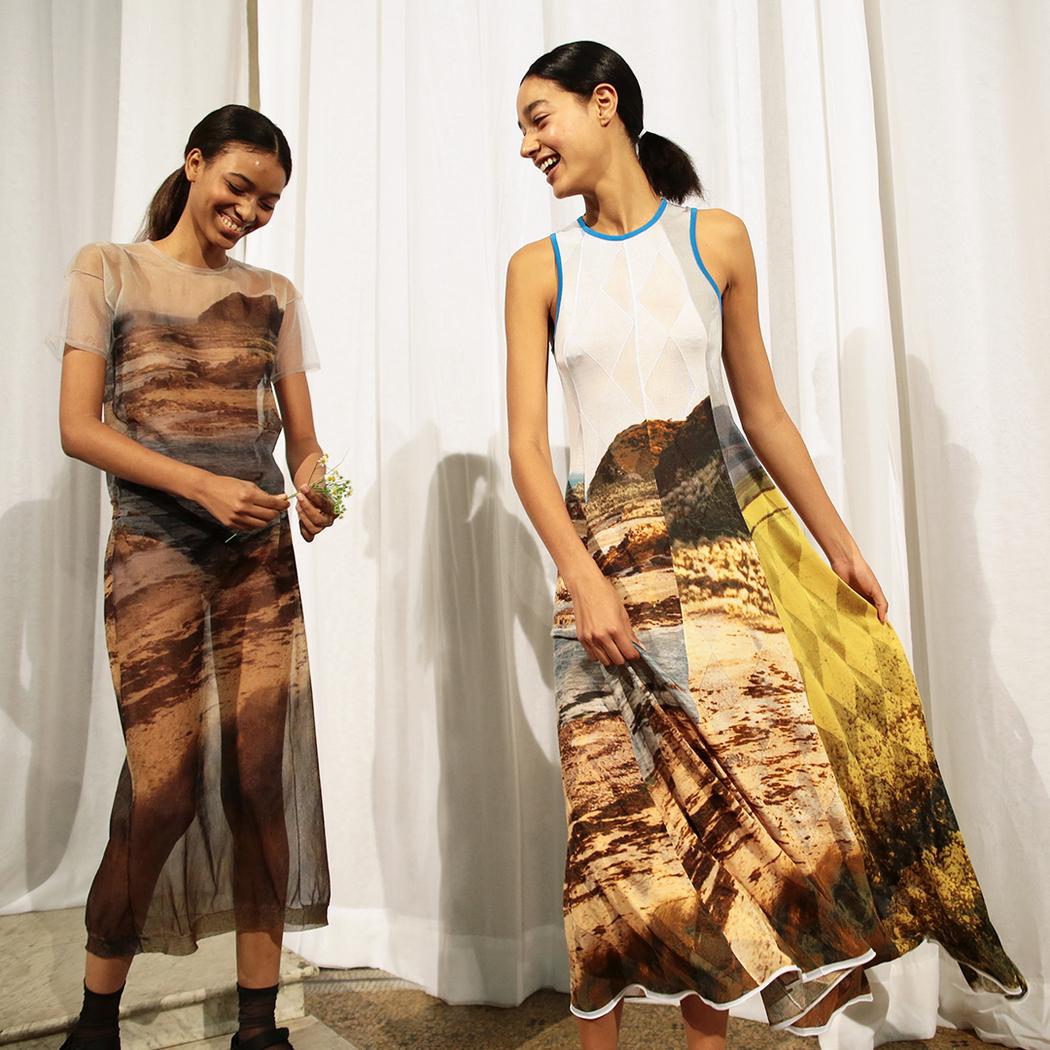
What would you say is the strongest truth or biggest misconception on northern style and culture?
Fran Stringer: Oh I think there are probably plenty on both sides. But one I think is true, and something to be proud of, is the northern swagger. It’s not about arrogance but about a confidence of feeling (and knowing) that you belong. The code of fashion, style that unites people. I think of my brother and his friends in their Pringle gear — they had their tribe, and they definitely had a swagger!
Christopher Shannon: I’m not sure outsiders get the sexiness of the north, I think if you were only informed by certain media depictions you’d have an idea of a very casual, sloppy way of dressing. But there’s a smartness and consideration to the style of Liverpool. Even if someone is in a full tracksuit, it’s likely to be a full North Face look, and with everything ‘just so’, from the height of the sock to the fit of the trainer.
Aitor Throup: Strongest truth: that a huge amount of creativity, particularly in music, comes from up north because of the rain. We just end up indoors a lot, so creativity tends to flourish. Biggest misconception: that we’re opinionated and mouthy. It’s just misconstrued passion.
Matty Bovan: I think northern culture is very honest, which I hope I still retain, and also very genuine.
Matthew Miller: The biggest truth is probably about sportswear, and the misconception is we all still dress like we’re in Oasis.
Nabil El-Nayal: I think that the north has perhaps sometimes been overlooked as a place for fashion designers to base themselves. Fashion has always been quite London-centric; however, I think that’s changing. It’s not financially viable for a lot of young designers to base themselves in London and I think the North has got a lot to offer in terms of being able to nurture new design talent. Some of the best textile production this country has ever seen came from the north and I believe it’s deeply ingrained in our heritage.
Daniel Fletcher: I think there’s a misconception that the north isn’t very cultured, that’s complete bollocks, but some parts of the culture are a bit different. I think people are more open, definitely more outspoken, which I think means people are a bit bolder with their style too. People dress up more, a night out in Liverpool is not like a night out in Surrey, you should see the outfits on races day in Chester — granted there are always some questionable choices, but people make an effort. I like that.
